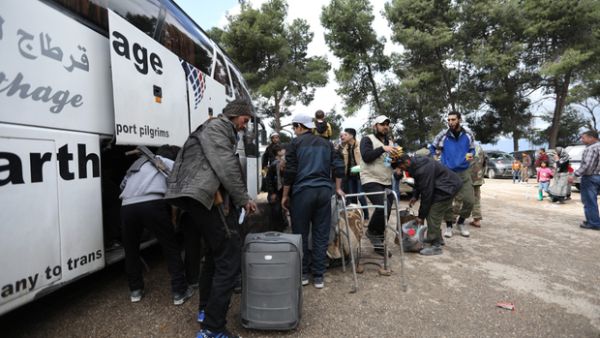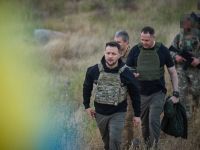The largest convoy of evacuated militants and their families has departed Syria’s Eastern Ghouta as the Syrian army presses ahead with a counterterrorism operation in the suburban area near Damascus.
Syria’s official SANA news agency reported on Tuesday that 100 buses carrying 6,749 people -- around a quarter of them militants -- had begun leaving a militant-held Eastern Ghouta area.
The departure was part of a ceasefire deal reached last week between the Faylaq al-Rahman militant group and Russia.
The agreement, which covers four Eastern Ghouta towns of Arbin, Zamalka, Jobar and Ein Terma, allows the immediate evacuation of the wounded.
It also permits civilians and militants to either leave for northern Syria or remain in Eastern Ghouta and reconcile with the government of Bashar al-Assad, with guarantees from Moscow that they will not be prosecuted.
Almost 1,000 people -- including militants, their relatives and other civilians -- were evacuated from Eastern Ghouta on Saturday and 5,435 others on Sunday.
The first ceasefire agreement in Eastern Ghouta was concluded with the Ahrar al-Sham group that agreed to the evacuation of up to 7,500 militants and their families from the town of Harasta.
The latest developments come amid reports that Syrian government forces have gained control over 90 percent of the Eastern Ghouta region.
Syria has established a humanitarian corridor to allow civilians to leave the operation zone, while Russia has been enforcing daily pauses in fighting to facilitate people's exit.
In February, the United Nations Security Council unanimously passed a resolution demanding a month-long ceasefire across Syria to allow for humanitarian aid deliveries and medical evacuations, but that has failed to reduce terrorist attacks on civilians.
This article has been adapted from its original source.










